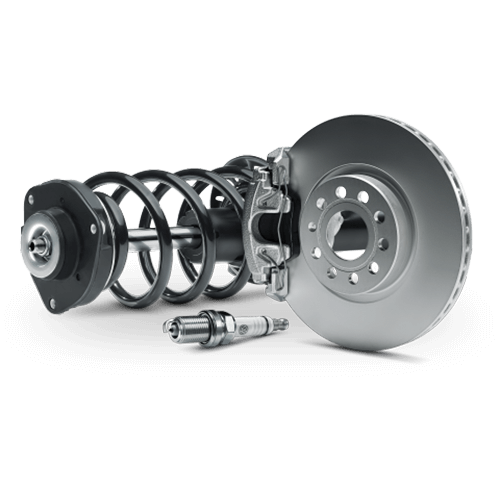
Why One Headlight Is Dimmer: Top 10 Causes and Easy Fixes Every Driver Should Know
Why One Headlight Looks Dimmer: Common Causes and Fixes
If you’ve ever driven at night and noticed one headlight shining dimmer than the other, you’re not alone. This is a frequent issue that affects HID (xenon), LED, and halogen headlights across many makes and models. Uneven brightness isn’t just an aesthetic problem — it can reduce visibility and indicate a deeper electrical or lighting component issue. Here’s a complete guide to the most common reasons one headlight looks dimmer and how to fix it safely.
1. Aging or Worn-Out Headlight Bulb
All bulbs dim over time, even premium HID or LED ones. As a halogen filament or xenon arc tube degrades, it produces less light output. One bulb may fade faster due to vibration, moisture, or heat.
Fix:
Always replace headlights in pairs to maintain consistent brightness and color. Use OEM-quality replacements like DAMA, Philips, Osram, or IPF for reliable light performance.
2. Corroded or Loose Headlight Connector
A corroded or loose wiring connector can restrict voltage, causing one headlight to appear dimmer. Moisture, oxidation, or a melted socket can disrupt power delivery.
Fix:
Disconnect the harness and check for rust, burnt pins, or loose connections. Clean with electrical contact cleaner and ensure a tight fit. Replace any damaged connectors.
3. Poor Ground Connection
A weak ground wire or corroded contact point prevents full current flow, leading to uneven light output — often just on one side.
Fix:
Inspect and clean the ground connection. Tighten or replace the ground bolt, ensuring solid metal contact. A poor ground is one of the most overlooked dim headlight causes.
4. Cloudy or Oxidized Headlight Lens
Foggy or yellowed lenses scatter and block light, making one headlight look dim even if the bulb is fine.
Fix:
Use a headlight restoration kit or fine polishing compound to remove oxidation. Severe lens damage may require replacing the headlight housing.
5. Faulty HID Ballast or LED Driver
In HID and LED systems, the ballast or driver regulates voltage. A weak or failing ballast can reduce brightness or cause flickering.
Fix:
Swap the ballast or LED driver from one side to the other to test. If the dimness moves with it, that component is the problem and should be replaced with an OEM or brand-name part.
This test is usually easier with HID systems, since the bulb and ballast are separate components. You can replace just the faulty ballast without changing the bulb.
For LED headlights, however, the driver is often built into or permanently attached to the bulb, making it difficult to replace the driver alone. In most cases, you’ll need to replace the entire LED bulb assembly to restore proper brightness.
6. Improper Bulb Installation
A bulb not fully seated or misaligned in the housing can result in poor focus and uneven projection.
Fix:
Reinstall the bulb properly. Ensure the base is flush and the bulb is locked securely into the socket. Double-check alignment for both HID and halogen setups.
7. Moisture or Condensation in the Headlight
Water or condensation inside the headlight housing diffuses the beam and reduces brightness.
Fix:
Remove the headlight and dry it completely using silica gel packs or gentle heat. Check for cracked seals or damaged vent caps and replace them if needed.
8. Voltage Drop in the Headlight Circuit
Aging wires, worn relays, or poor connections can create voltage drops, especially in older vehicles.
Fix:
Test the voltage at the bulb connector with a multimeter. A healthy reading should be close to battery voltage (12.6V+). If not, inspect the relay, fuse, and wiring harness.
9. Mismatched Bulbs or Color Temperatures
Installing two different brands or color temperatures can make one headlight appear dimmer even when both work correctly.
Fix:
Always install matching pairs of headlights from the same brand and color temperature (e.g., both 4300K or both 6000K HID bulbs).
10. Failing Battery or Alternator
If you notice both headlights flicker, but one side is weaker, your electrical system might not be delivering consistent voltage.
Fix:
Test the alternator’s output. It should provide between 13.8 and 14.4 volts with the engine running. Replace the battery or alternator if readings are low.
Final Tips for Preventing Dim Headlights
- Use dielectric grease on connectors to prevent corrosion.
- Check the headlight aim after bulb replacement.
- Replace both bulbs together to maintain symmetry.
- Avoid low-quality aftermarket HID kits — they often cause uneven brightness or flickering.
Upgrade to Reliable Lighting
To ensure consistent brightness and long-lasting performance, choose OEM-quality HID, LED, and halogen bulbs from trusted brands like DAMA, Philips, Osram, and IPF — available at HIDConcept.com.
Keep your headlights bright, your vision clear, and your night drives safe with the right lighting maintenance and premium components.






